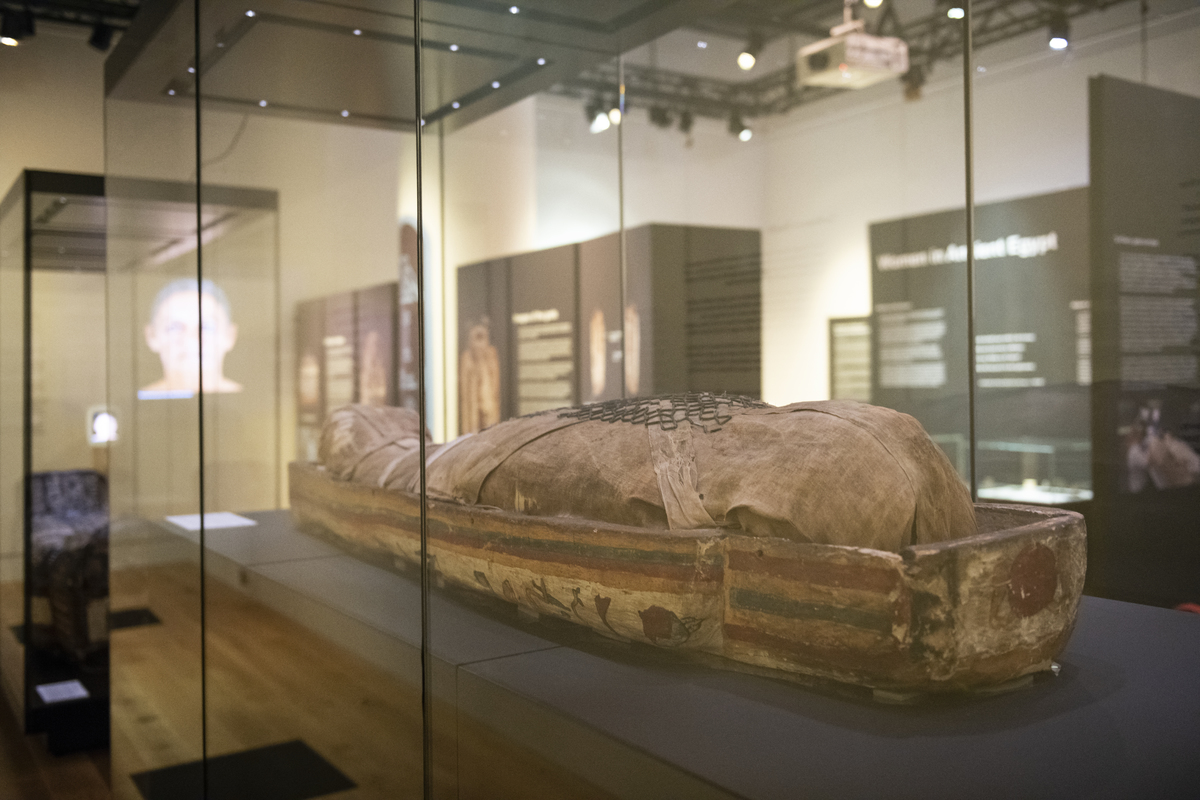Investigating the Mummy
Ta-Kheru’s mummified body is wrapped in linen and covered by a fine net of faience beadwork. The CT scan allowed us to look inside in detail without damaging anything. Led by Dr. Roman Sokiranski, staff at the Radiological Centre in Heidelberg took over 3000 X-ray images in what is the world’s most advanced CT study of an Egyptian mummy.
The CT image revealed over 50 layers of linen wrappings treated with embalming resin, including a shroud covering her face. Such elaborate bandaging was usually associated with a very high status individual, showing that her relatives spared no expense on her funeral.
It was clear from the scan that Ta-Kheru is almost perfectly preserved. She must have had a very expensive mummification. Her internal organs were removed through an incision in her left abdomen. All her internal organs except her trachea (windpipe) were neatly taken out, including her heart which would more usually be left in place. Her stomach, intestines, lungs and liver would have been stored in canopic jars in her tomb. The cavity where her organs were removed was carefully stuffed to give her the appearance of life.
Ta-Kheru’s brain was also removed and would have been thrown away. In Ta-Kheru’s case the embalmers extracted the brain through the base of her skull, rather than through her nose. On the scan this could be seen by a slight enlargement of the foramen magnum, the opening for the spinal cord at the base of the skull. This procedure would require considerable dexterity.


